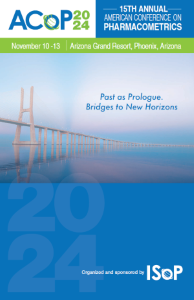The Practical Bayesian: How Bayesian Methodology is Incorporated into Clinical Drug Development
Hybrid Approaches in Pharmacometric Modeling: Integrating Maximum Likelihood and Bayesian Estimation
Wednesday, November 13, 2024
1:45 PM – 2:15 PM MST
Location: Sonoran Sky Ballroom 1-4

Timothy Waterhouse, PhD (he/him/his)
Principal Scientist II
Metrum Research Group, United StatesDisclosure(s): No financial relationships to disclose
Speaker(s)
Disclosure(s):
Timothy Waterhouse, PhD: No financial relationships to disclose
Model development in pharmacometrics often involves iterating over dozens of potential models to identify a suitable structure, including fixed and random effects. While Bayesian estimation offers several advantages over maximum likelihood estimation (MLE) such as incorporation of prior knowledge, better quantification of uncertainty, and flexibility in model specification, those advantages are often offset by the time and computational needs when developing the model structure. Even for models of moderate complexity and datasets of modest size, it is often the case that the computational demands of MCMC algorithms in Bayesian estimation render the execution of the dozens of candidate models impractical when MLE methods could churn through them easily. We discuss a hybrid approach where the bulk of the model development is done using MLE and final (or near-final) models are run with Bayesian methods, in each case using estimation methods available in NONMEM. This allows for model development in a reasonable time but also provides the potent advantages of the Bayesian posterior: a comprehensive quantification of parameter certainty and direct probability statements about parameters or model predictions, allowing for better-informed decision making. We illustrate the approach with a variety of examples for PK, PK/PD, and exposure-response models.

